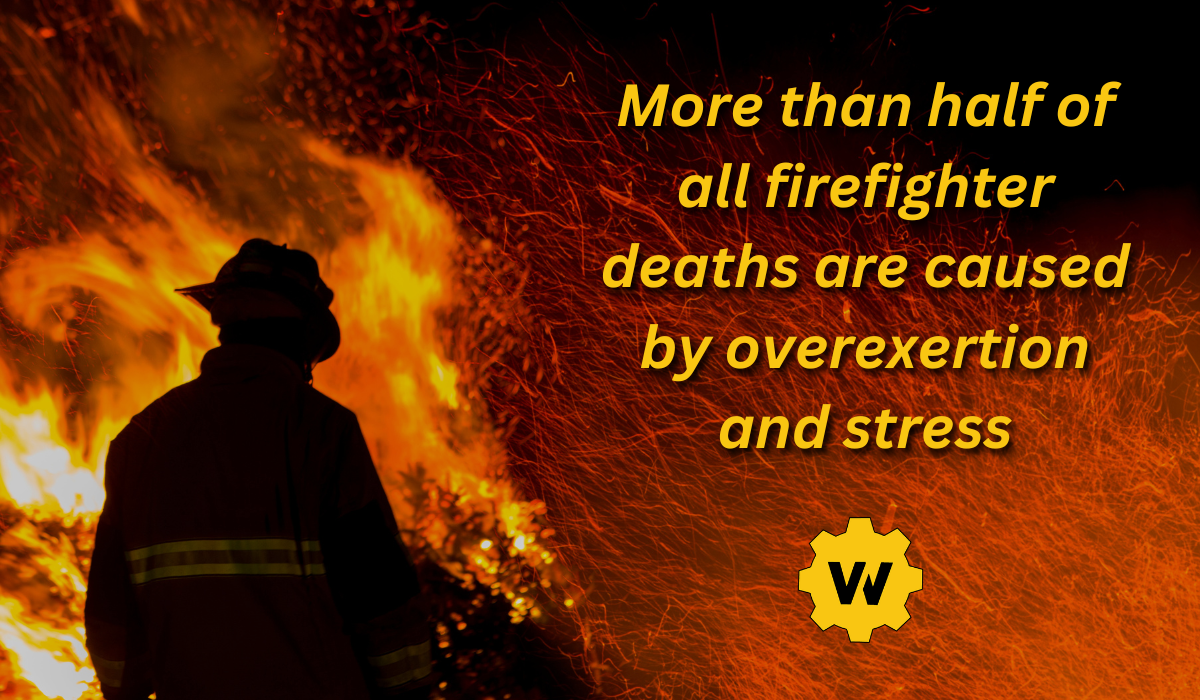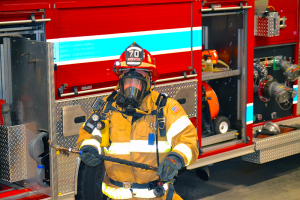Dangers Away From the Flames
On Feb. 8, 2017, Illinois firefighter John “Mike” Cummins, of Homer FD, passed out at the wheel while driving home from the station.
His passenger, fellow firefighter Cody Shik, jumped from the vehicle just moments prior to it crashing into three parked cars. Cummins, a first responder and 25-plus year volunteer, sustained multiple injuries and died a few hours later at nearby Carle Hospital.
Fire Chief Don Happ told police he knew Cummins was not feeling well prior to the accident. Recently, he’d had a blood clot removed from his leg.
Unfortunately, this is an all-too-common case with firefighters.
Firefighting is often romanticized as a heroic profession. But, beneath the surface lies a dangerous reality, one that affects their health, and can even lead to death.
The greatest threats to a firefighter’s life may not always come from the flames they face on duty, but from unseen health hazards that lurk long after the fire is extinguished.
Each year, nearly half of all firefighter fatalities are attributed to personal medical emergencies (especially heart attacks), often triggered by the physically demanding nature of their work, and exposure to toxic environments.
Here, we’ll examine the medical dangers of firefighting, the importance of Standard 1582, and how you can better protect your team.
Related Article: Overcoming the Dangers of Firefighting.
Related Article: Breaking Down Requirements for NFPA 1582.
Where There’s Smoke, There’s Risk
Firefighting is inherently a risky occupation, not just due to the immediate dangers of fire and smoke but also because of long-term health risks.
The National Fire Protection Association (NFPA), in 2022 updated the Standard 1582, which outlines essential medical programs designed to better protect the health and safety of firefighters.
This standard includes requirements for comprehensive medical evaluations, such as physical exams, chest X-rays and cancer screenings. By adhering to new NFPA 1582, fire departments can greatly reduce preventable risks and ensure that your crew members are properly protected for duty.

The Importance of the Updated NFPA 1582
NFPA 1582 is a guideline for fire departments to implement effective occupational health programs.
These programs are vital to identifying underlying health issues that could limit a firefighter’s ability to perform his/her duties safely. Division Chief Todd DeLuc emphasizes that understanding and applying these standards is important for minimizing risks and ensuring that “Everybody Goes Home.”
The updated 2022 NFPA 1582 guide focuses on the medical requirements for firefighters and emphasizes the importance of comprehensive health assessments to enhance firefighter safety (as well as effectiveness).
The revision aims to address the unique health risks firefighters face and encourages fire departments to implement robust medical programs that align with these standards.
This edition reflects a commitment to ensuring that firefighters are physically and mentally fit for duty, ultimately promoting their well-being and safety on the job.
Related Article: Cancer Leading Cause of Death in Firefighters
Summarizing the Changes to NFPA 1582
- Equal Medical Standards: This revised standard eliminates the former distinction between medical evaluations for new candidates and current members.
- Focus on Fitness for Duty: This new update highlights the importance of ensuring that all firefighters (both new and old) are fit for their duties, thereby minimizing the risk of work-related injuries and illnesses.
- Legal and Ethical Considerations: This update also reflects a commitment to rectify these issues, promoting fair treatment in medical evaluations for all firefighters.
The updated Standard 1582 can be found on; NFPA LiNK, NFPAFree Access, and as hardcopies.
– See the NFPA 1582 Firefighter Testing Checklist.
Respiratory Protection Standards
In addition to medical evaluations for firefighters, OSHA’s respiratory protection standard (1910.134) mandates that employers develop written respiratory protection programs when respirators are necessary for employee health and safety.
Firefighters face heightened risks of respiratory cancer due to exposure to toxic substances as they carry out their duties.
Compliance with these regulations is very important; failure to conduct proper fit testing and maintain respiratory protection standards can result in violations and fines.
Mental Health Considerations
The mental health of firefighters is another crucial aspect of their well-being you shouldn’t overlook. The pressures of the job can lead to conditions such as PTSD, anxiety, fear and depression.
Recent OSHA updates emphasize the importance of mental health programs in the workplace, encouraging fire departments to provide resources and support for their workers.
Implementing Comprehensive Health Programs
To effectively safeguard firefighters’ health and safety, departments should adopt comprehensive occupational health programs that include:
– Annual Medical Evaluations: Following NFPA 1582 guidelines ensures regular assessments of cardiovascular, respiratory, and musculoskeletal health.
– Mental Health Resources: Providing access to counseling and support services can help address psychological challenges faced by firefighters.
– Training and Awareness: Continuous education on health risks and safety practices is essential for maintaining a culture of safety within fire departments.
Key Takeaways
The dangers firefighters face extend far beyond the fires and flames they battle on a daily basis. With nearly half of firefighter fatalities resulting from medical emergencies, it is imperative for fire departments to prioritize comprehensive health and safety programs for their personnel.
By adhering to NFPA 1582 standards and implementing robust respiratory protection protocols, departments can significantly reduce risks associated with the job. Moreover, recognizing the importance of mental health resources will ensure that firefighters receive the proper support they need to thrive in their demanding roles.
There are over one million firefighters in the United States, over half of them serving as volunteers.
Each day these brave men and women risk their lives to keep their communities safe. Cummins selflessly spent his life providing safety and well-being to his neighbors.
It’s time to focus on doing the same for firefighters.

Create a Less Disruptive, More Productive Occupational Health Plan with Worksite Medical!
Are you looking for a way to keep your team safe, while also limiting risk and increasing production? Simplify your medical plan today. We help team leaders like you develop less disruptive, more convenient occupational health plans that comply with complex industry standards, thus creating a healthier, more productive workforce. Take control of your medical testing program, and make sure your team is within NFPA 1582 requirements.
Request a Quote or Schedule Your Testing
"*" indicates required fields




